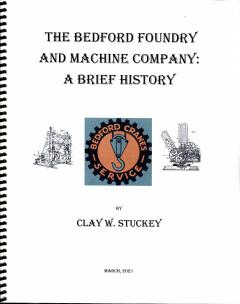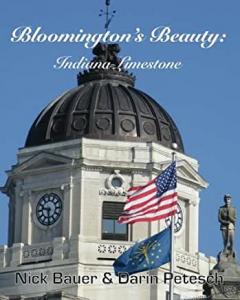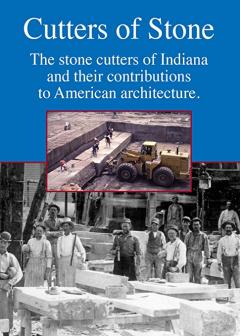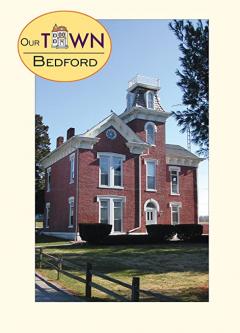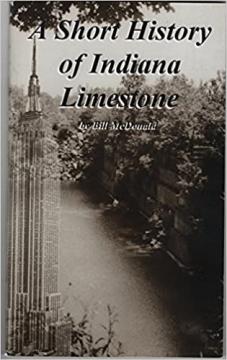Limestone stories are built into the foundation of our community. Read or watch a few to find out how limestone has shaped Bloomington, Indiana, and beyond.
This book covers a history of the limestone industry along with a detailed account the equipment used to extract, cut and move the stone including: cranes, planers, milling machines, diamond saws, gang saws, pumps, derricks, hoists, and lathes. The book is filled with both black and white and color photographs and diagrams of equipment.
Beautiful photographs of limestone buildings in Bloomington.
Documents five generations of Indiana stone cutters and carvers who have helped create some of the most beautiful buildings in United States architectural history. - Publisher
Explores the early history of the limestone industry focusing specifically on Lawrence County.
History of the Hoadley family and the Hoadley Limestone Company.
The story of the stone, from its geologic origins through its mining history to the present. Sanders records the folklore, the craft, the distinct culture that has grown up around Indiana limestone. - Random House
The story of the Matthews family, early limestone industrialists.
WTIU interviews the people of Bedford, Indiana, who tell what is special about their town. They discuss the social life, the sense of community, the history, the limestone industry and more. - Publisher
A guide for exploring limestone quarries in Monroe and Lawrence counties.
A brief history of limestone in Indiana.
In this new edition of Stone Country, Scott Russell Sanders and Jeffrey A. Wolin talk with the stone workers, explore the quarries and mills, and trample along creeks and railroad spurs uncovering the history of the industry and the people who built it. These new stories and photographs are a biography, not of a person—although it is filled with many portraits of individuals—but of a place. - Ingram Publishing Services
Indiana limestone is included in this book of stories about stone building materials. Williams shows us why a white, fossil-rich limestone from Indiana became the only building stone to be used in all fifty states; how the construction of the granite Bunker Hill Monument in 1825 led to America’s first commercial railroad; and why Carrara marble—the favorite sculpting material of Michelangelo—warped so much after only nineteen years on a Chicago skyscraper that all forty-four thousand panels of the stone had to be replaced. - McMillan Palgrave

